What Makes Non-Toxic Candles Safer For Your Health?
Primal Edge Health participates in the Amazon Services LLC Associates Program and other affiliate programs and therefore, may collect a share of sales or other compensation from the links on this page. This comes at no additional cost to you, and all the prices and availability are accurate at the time of publishing.
What are non-toxic candles and why are they safer options for our health and the environment? If you haven’t cared much about the ingredients in your candles, now is the best time to start paying more attention.

Candles are some of my favorite decorative pieces. I place them all over the house, and they provide a warm, cozy feel even if they aren’t lit. When they are lit, they fill the room with comforting aromas of my favorite essential oils.
However, I make sure that all my candles are safe for humans and the environment, and I’m excited to share how you can do the same.
Table of Contents (click to view)
What Are Potential Harmful Ingredients in Candles?
Candles are part of everyday life, even if we’re way past the point of using them as a main source of light. We still use them for birthday cakes, religious events, and, of course, decorations.
They have been such mainstays in our daily lives that we rarely question their effect on our health. However, recent research shows that not all candles are safe for humans and the environment because of several harmful ingredients:
Paraffin Wax
Paraffin wax, a petroleum byproduct discovered in the early 19th century, is a common ingredient in candles. It’s perhaps the most commonly used wax for candles, mainly because of its affordability and ability to hold scents and dyes.
When burned, paraffin releases chemicals such as toluene and benzene, both of which are known carcinogens (and also found in diesel fumes!). According to McGill University, research from South Carolina State University indicates that paraffin candles emit pollutants that can be harmful when inhaled.
However, the National Candle Association maintains that paraffin candles are safe when used properly. Plus, paraffin is approved by the FDA for production, packaging and food processing, and even medical uses. Take that information for what it’s worth.
Even if there is no strong evidence of the negative health effects of paraffin, why risk it? With what we know today, it’s best to avoid inhaling paraffin smoke and only use candles in well-ventilated areas with an air purifier running to get rid of the pollutants.
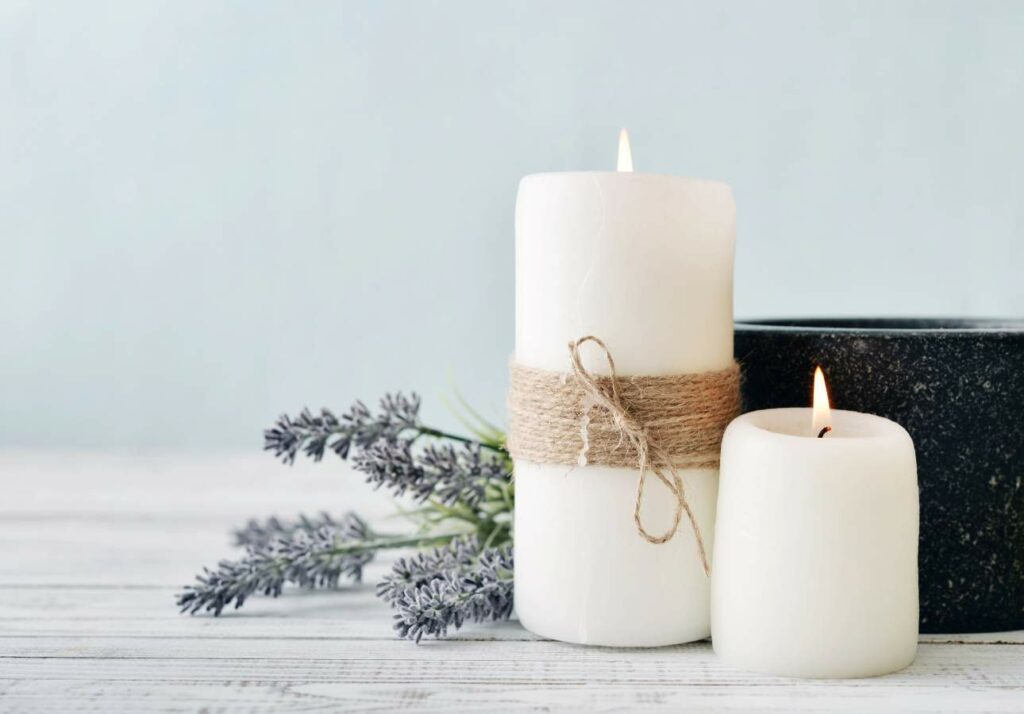
Synthetic Fragrances
Lighting a scented candle might seem like a simple way to create a cozy ambiance, but those wonderful aromas could be hiding a not-so-pleasant truth. Synthetic fragrances in candles are made from a complex mix of chemicals, many of which are classified as volatile organic compounds (VOCs), says this 2023 study in the Journal of Xenobiotics.
When these candles burn, they release VOCs such as benzene and toluene, which we already know are considered carcinogens. According to the Environmental Protection Agency (EPA), exposure to these substances can lead to a host of health issues, including headaches, respiratory problems, and even damage to internal organs over prolonged periods.
Phthalates, another common ingredient in synthetic fragrances, pose additional risks. When candles are burned, phthalates are released into the air and can be inhaled or absorbed through the skin.
These chemicals have been linked to hormonal disruptions and can exacerbate conditions like asthma and allergies, as evidenced by this 2023 study on BMC Public Health. They can even be more harmful when they come in direct contact with the skin, which is why I highly recommend using safer cleaning products like non-toxic laundry detergent.
I also want to emphasize that fragrances can be potentially harmful to the skin in general, whether it’s in candles or laundry detergent. So, if you are particularly susceptible to harsh chemicals, go for milder alternatives, such as scent-free candles and laundry detergent for sensitive skin.
Heavy Metals
Heavy metals in candles? Sounds unlikely, but if you don’t buy your candles from a reliable source, these harmful components can sneak into your home.
Candle wicks containing heavy metals, particularly lead, pose serious health risks. Despite US CPSC banning the sale of lead-cored wicks in the U.S. since 2003, these hazardous products can still occasionally be found in the market.
When you burn a candle with a lead-core wick, it releases toxic lead particles into the air. According to the World Health Organization (WHO), breathing in these particles can cause significant health problems.
For children, even low levels of lead exposure can result in severe neurological damage, developmental delays, and learning difficulties. For adults, prolonged exposure to lead can lead to cardiovascular issues, kidney damage, and a host of other health problems, including miscarriage and stillbirth for pregnant women.
Additives
Additives are often used in candle manufacturing to enhance performance characteristics, such as improving the scent throw, hardening the wax, or producing a more even burn. While these additives can improve the candle’s functionality, they can also release harmful chemicals when burned.
Stearic acid is a common additive used to harden candles and extend their burn time. Although not inherently harmful, stearic acid is often derived from animal fats or palm oil, which can have environmental implications. These are particularly related to deforestation and habitat destruction, according to Rainforest Rescue.
What Are Non-Toxic Candles?
So, how do you enjoy candles while keeping your home and health safe at the same time? There’s pretty much only one solution: non-toxic candles.
Non-toxic candles are crafted from ingredients that ensure a cleaner burn and ensure healthier indoor air quality. They are designed to avoid the release of harmful chemicals and pollutants, similar to non-toxic cookware that doesn’t emit dangerous emissions at a certain temperature. Here’s what makes non-toxic candles safer:
Natural Waxes
The most important component of a safer candle is natural wax. It should burn clean, produce little to no harmful emissions, and contain environmentally friendly ingredients. Here are some healthier options than paraffin:
- Beeswax: Made from the honeycomb of bees, beeswax candles have a natural, subtle honey scent and burn cleanly.
- Coconut wax: This wax is extracted from coconut meat, is biodegradable, and burns cleanly. According to The Strong Movement, coconut wax candles provide an even, long-lasting burn and a gentle, pleasant scent without all the harmful toxins.
- Tallow: Tallow is made from rendered animal fat, typically from cows or sheep. Tallow candles burn steadily and have a distinct odor that might remind you of their animal origin. I use tallow candles and for skin care too.
- Soy wax: This renewable resource burns cleaner and slower than paraffin wax, producing minimal soot and fewer pollutants, according to the EPA. Soy candles are known for their long-lasting burn and eco-friendly profile, which is why they’re my favorite for scented candles.
Natural Fragrances
The Medicines Journal defines essential oils as substances derived from plants, which capture their pure, natural essence. This means that when you burn a candle scented with essential oils, you’re experiencing a fragrance that is both authentic and beneficial.
For instance, lavender essential oil is renowned for its calming properties, making it perfect for unwinding after a long day. It’s my go-to essential oil if I want to reset my circadian rhythm into a healthier pattern. I also like chamomile scents for winding down after workouts or settling in for my red light therapy session, which I prefer to be as relaxing as possible.
Unlike synthetic fragrances, which can release harmful chemicals into the air, essential oils do not contribute to indoor air pollution. This is why it’s extremely important to carefully read the ingredient labels of the candles you buy. If it says “synthetic,” think twice!
However, the American Lung Association warns against inhaling these substances directly, whether natural or not. Excessive exposure to these concentrated oils may irritate the respiratory system, especially if you have asthma or chronic obstructive pulmonary disease (COPD). If you’re using scented candles in the winter, it’s a good idea to keep an air purifier running to keep these scents from getting trapped indoors.
Even though these higher-quality green products are more expensive, natural essential oils can be better for the environment. The extraction of essential oils typically involves natural processes that are less harmful to the environment compared to the production of synthetic fragrances, which often rely on petrochemicals.

Safe Wicks
Now for the figurative cherry on top of your candles: the wick! As we’ve mentioned before, wicks containing heavy metals are an absolute no-no. Luckily, the lead wick ban has made it easier to avoid candles containing dangerous metals.
Still, it’s better to be safe than sorry, especially if you’re purchasing candles online that may not come from places where lead wicks are prohibited. Here are some safer alternatives I recommend:
- Cotton wicks: These wicks are free from heavy metals and other harmful substances, providing a clean burn. Unlike some metal-core wicks, cotton wicks do not release toxic fumes when burned and they are typically braided or twisted to ensure an even and stable flame.
- Wood wicks: Made from sustainably sourced wood, these wicks offer a unique and charming burn experience because they create a quite crackling sound like a fireplace. They also burn evenly and cleanly, producing minimal soot and fewer pollutants.
Dyes and Additives
Lastly, what about dyes and other additives like decorative items? Synthetic dyes are often used to give candles their appealing colors. However, these dyes can pose health risks when burned.
When candles with synthetic dyes are lit, they can release toxic compounds into the air. According to the Annals of Medicine & Surgery, candles colored with toluene derivatives and benzidine-based dyes are particularly dangerous because they are associated with urothelial cancer.
As for candle decorations like flower petals and leaves, they should be safe as long as they don’t burn while your candle is melting. According to the Indiana Department of Environmental Management, organic material can produce harmful chemicals like carbon monoxide into the air when burned.
What about inorganic materials like ribbons or containers? Well, they should also be fine as long as they don’t burn up. In this case, it’s a matter of preventing a fire rather than avoiding harmful emissions.
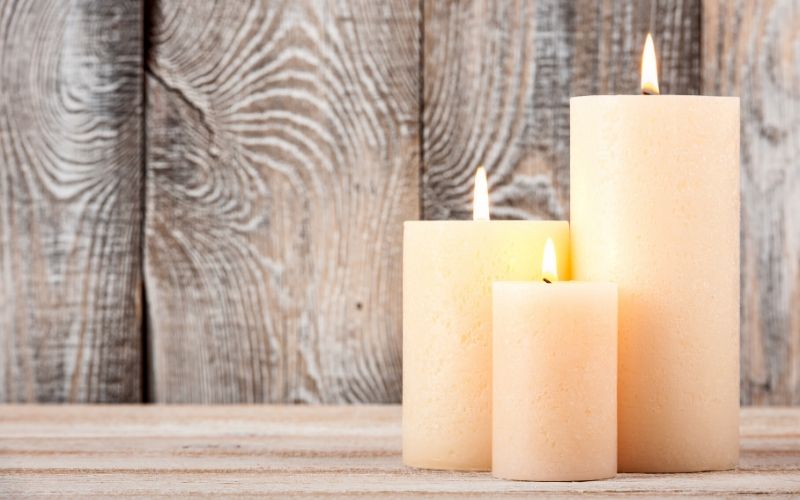
Best Non-Toxic Candles For Your Home
Don’t want to make your own candles at home? No problem! I don’t always have the time to make candles from scratch, so I choose to buy from reliable stores instead. Here are some of my favorites:
1. Aroma Naturals Essential Oil Orange and Lemongrass
This Aroma Naturals Essential Oil Soy Candle checks all the boxes. Made from 100% natural soy wax, it burns cleanly and evenly, producing minimal soot and no harmful chemicals. Plus, the wick is made of pure cotton, free from lead and other harmful metals for a safe and non-toxic burn.
However, my favorite thing about this product is its use of pure essential oils. The orange and lemongrass scent is rich and authentic, derived from natural ingredients without the use of phthalates or synthetic additives.
2. FKJOL Soy Scented Candles in Lavender Fresh Rose
The Soy Scented Candles are a staple in my home for both its soothing aroma and its safety features. These candles are made from 100% natural soy wax, which means they burn cleanly without producing harmful soot or toxins. Better yet, the lavender essential oil provides a soothing aroma, which is perfect for relaxation and stress relief.
I also love that these come in elegant glass jars that add a touch of sophistication to my office standing desk while being reusable and eco-friendly. Plus, I love giving them as gifts to friends and family during the holidays.
3. Natur IX Healing Candle in Sage & Eucalyptus
The Natur IX Healing Candle in the Sage & Eucalyptus scent has quickly become my go-to for adding a fresh and clean aroma to my home. This candle is crafted from non-toxic soy wax, which is not only eco-friendly and biodegradable but also burns cleaner and longer.
The reusable container is a bonus, perfect for storage or decor once the candle has burned down, and I absolutely love the wick made from 100% natural cotton. Another plus is that the packaging is like a little gift, so you can easily use it as a present for special occasions.
Final Thoughts
As consumers, it’s our responsibility to be more vigilant about the products we use, especially if those products emit some sort of fumes into our homes. As you can tell, non-toxic candles aren’t hard to come by, but it’s important that you take a good look at the ingredient list and steer clear of the harmful ingredients we’ve tackled.



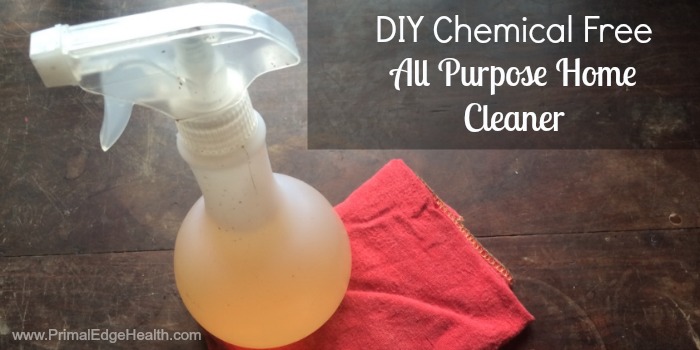
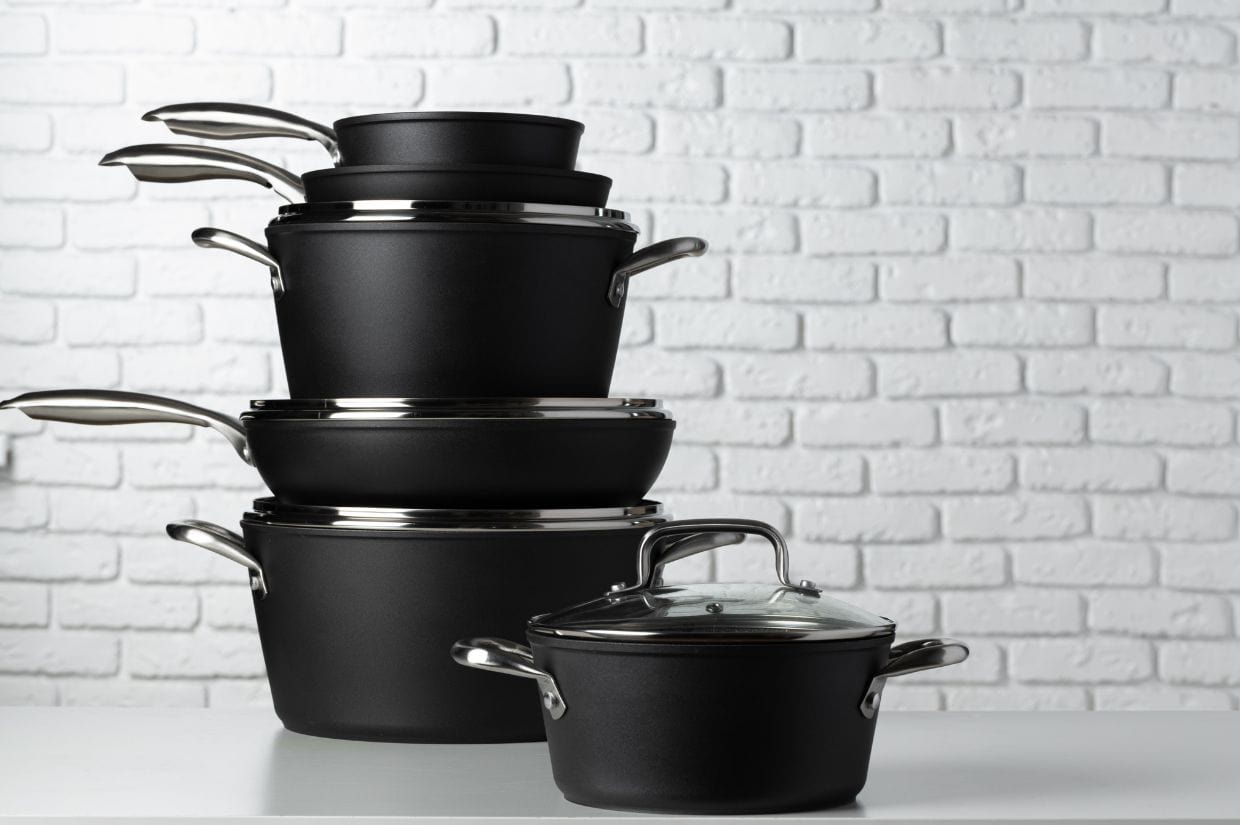

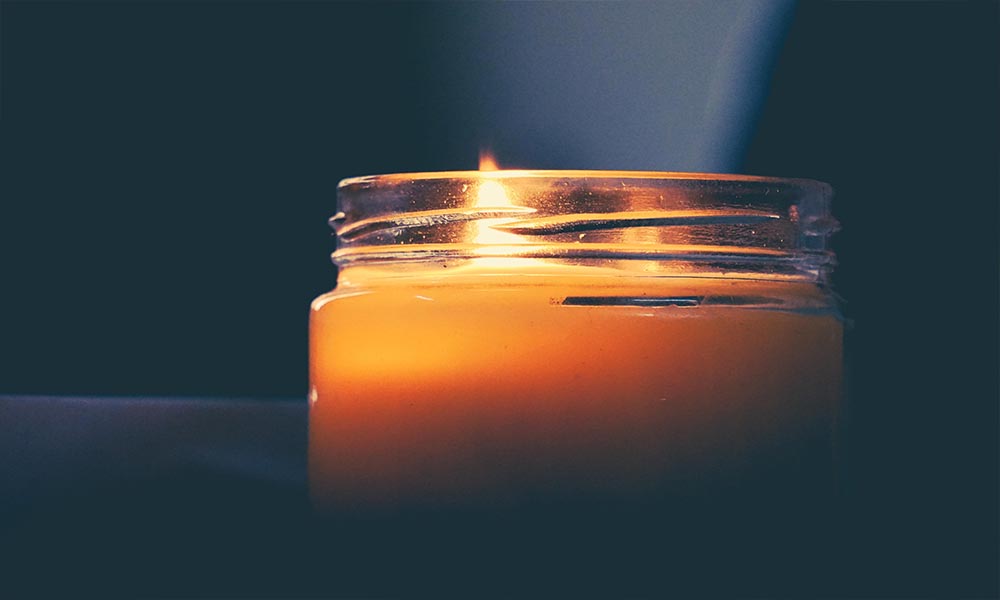

Our home’s air quality has improved significantly after we switched to these non-toxic candles.
I’m so glad to hear that, Jenny. Thank you for the warm feedback!